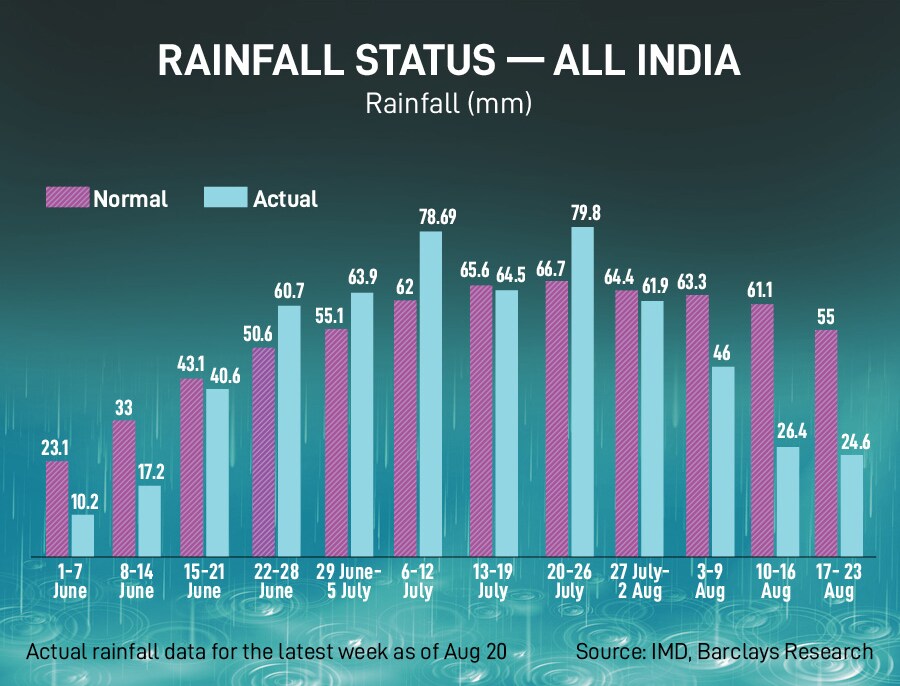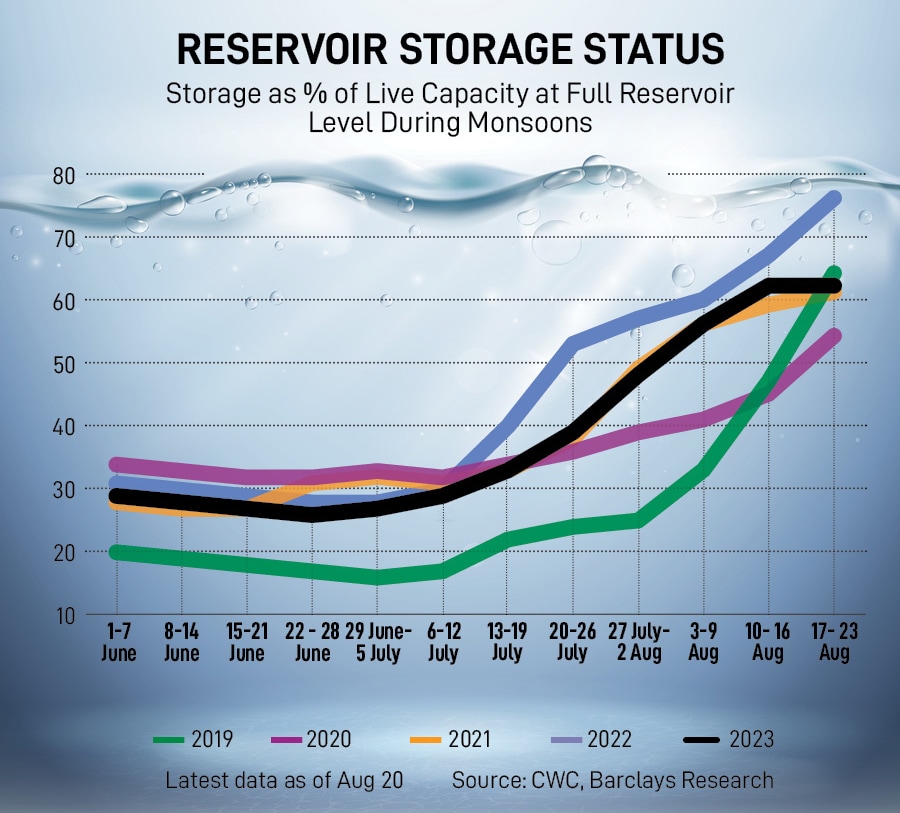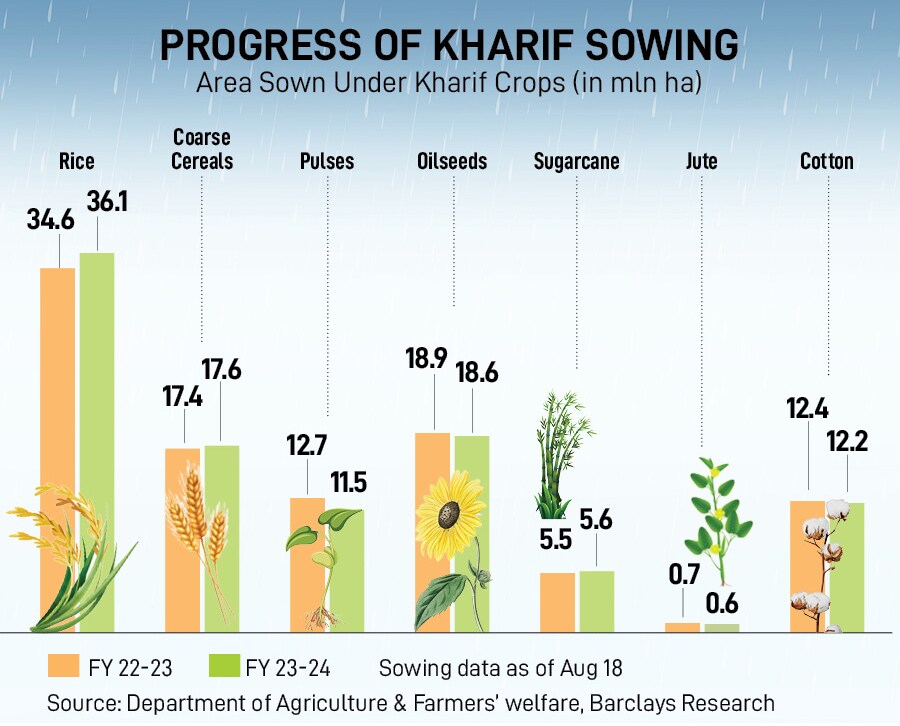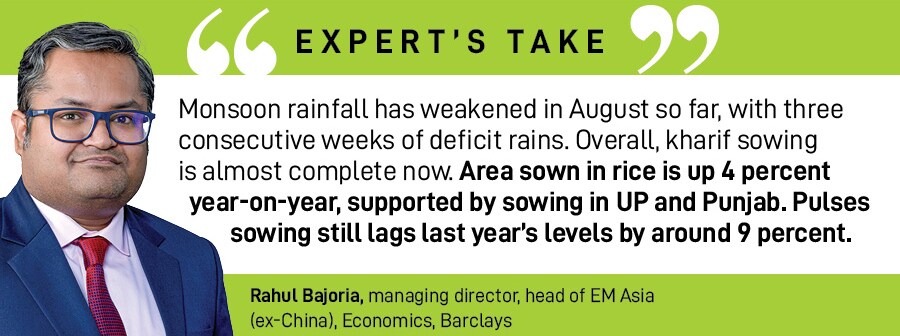Rain watch for August 17-23 : Monsoon weakens, area sown for pulses lagging
Kharif sowing further improved over the past week, with most of the improvement seen in rice and pulses, two crops where sowing was lagging, implying some catchup


Even as monsoon rainfall had caught up with speed and spread, barring the eastern region, in July, the pace has slowed to effectively become weak in August. Gradually approaching the end of the monsoon season in September, rainfall became tad scanty in a few regions. Monsoon rainfall was deficient across the country over the past week.
Cumulatively, pan India rainfall is still normal, at 7 percent below the long period average (LPA) for the period June 1 to August 20, according to an analysis by Barclays based on Indian Meteorological Department (IMD) data. IMD classifies rainfall within 10 percent of the LPA as normal. Out of 36 subdivisions, 26 saw ‘deficient or large deficient’ rainfall in the past week.

Region wise, the cumulative surplus rainfall reduced in the northwest and central regions, while the southern region slipped into deficit. For this week, the IMD has forecast subdued rainfall activity to continue over most regions, though noted the likelihood of heavy rainfall over eastern and central parts. If this happens, this should reduce rainfall deficiency in the eastern region, says Barclays.


As of August 17, storage in key reservoirs stood at 62 percent of total capacity, lower than last year’s level at this stage of the monsoon season. It is now also marginally below the historical average.
 Kharif sowing further improved over the past week , with most of the improvement seen in rice and pulses, two crops where sowing was lagging, implying some catchup. Within rice, sowing increased mostly in West Bengal, as it received heavy rainfall in early August. The area sown for cotton, coarse cereals, sugarcane is already above 90 percent of normal, and is also higher than the corresponding period of last year (except cotton).
Kharif sowing further improved over the past week , with most of the improvement seen in rice and pulses, two crops where sowing was lagging, implying some catchup. Within rice, sowing increased mostly in West Bengal, as it received heavy rainfall in early August. The area sown for cotton, coarse cereals, sugarcane is already above 90 percent of normal, and is also higher than the corresponding period of last year (except cotton).
With the IMD’s forecast of below normal rainfall for August, irrigation sources will be crucial for improving sowing and soil moisture, says Rahul Bajoria, managing director, head of EM Asia (ex-China), economics, Barclays. Empirical evidence suggests that irrigation mitigates rainfall deficiency for agriculture production.

According to an RBI study, India’s rice production is now less dependent on rainfall, as the crop is primarily sown in irrigated areas. This is reflected in sowing patterns this year in Punjab and Uttar Pradesh, which are among the top three states for rice production.
Forbes India"s Rain Watch series simplifies rainfall status, water reservoir levels and sowing pattern of kharif crops, using data analysis by Barclays.
First Published: Aug 22, 2023, 15:27
Subscribe Now